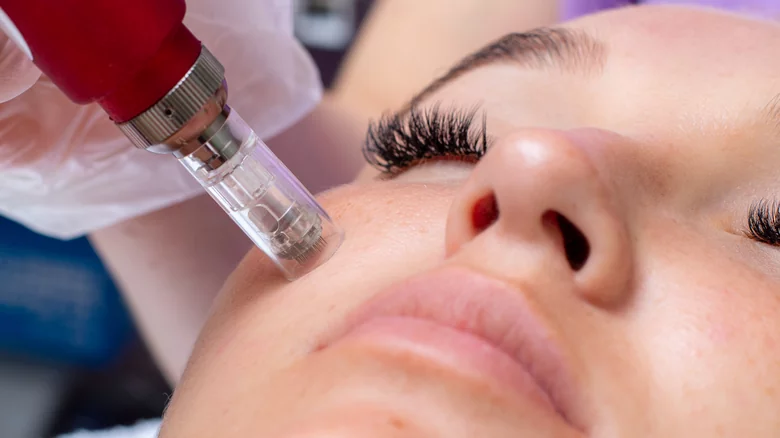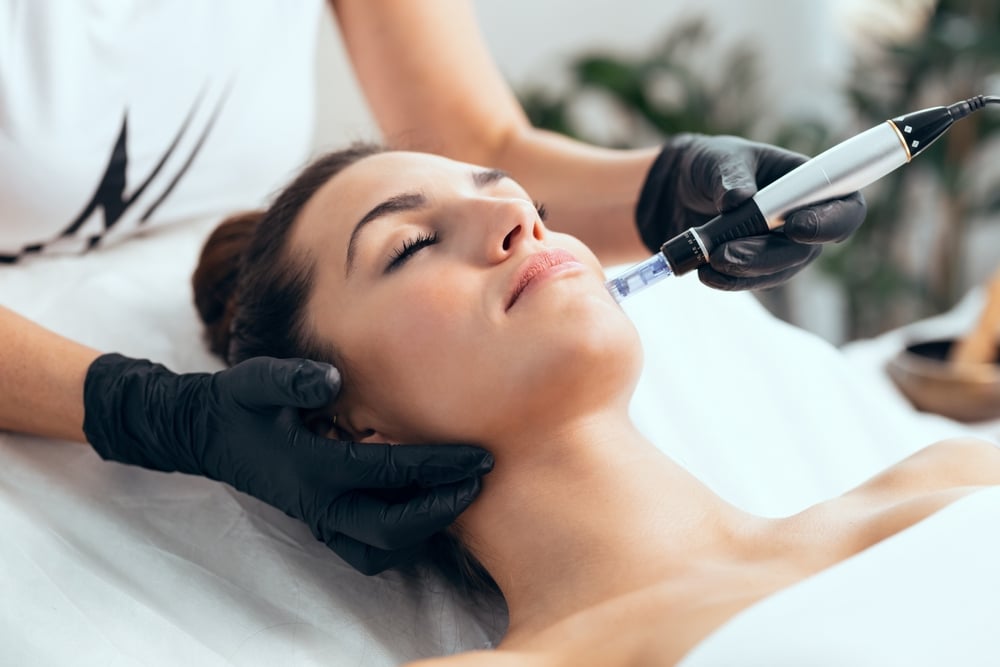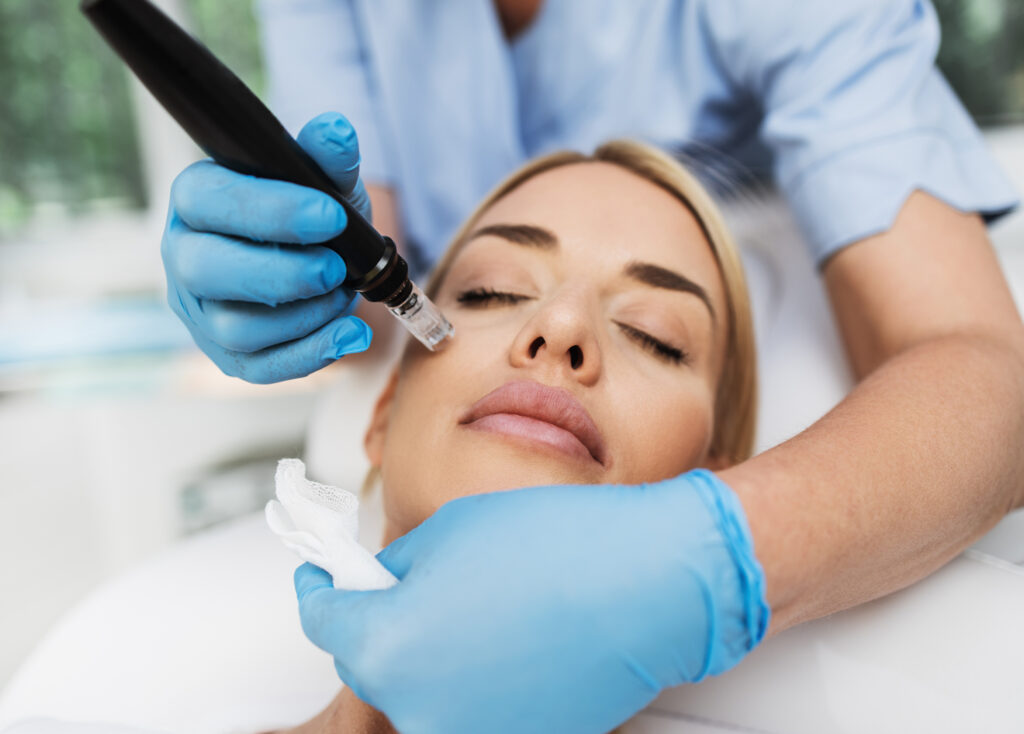If you're looking for a way to improve the appearance of your skin, you may have come across microneedling. This minimally invasive procedure involves using a device with tiny needles to puncture the skin, which can stimulate collagen production and improve texture and tone. However, as with any cosmetic treatment, there are risks and rewards to consider before deciding if microneedling is right for you. In this article, we'll take a closer look at what microneedling is, how it works, and what you need to know to ensure healthy, glowing skin. From potential side effects to the benefits of regular treatments, we'll cover everything you need to know to make an informed decision about whether microneedling is the right choice for your skincare routine. So, let's dive in and explore the world of microneedling together!
Microneedling works by puncturing the skin with tiny needles to create micro-injuries. These micro-injuries stimulate the skin's natural healing process, including the production of collagen and elastin. Collagen is a protein that gives skin its strength and structure, while elastin provides elasticity. As we age, our skin produces less collagen and elastin, which can lead to wrinkles, sagging, and other signs of aging. By stimulating collagen and elastin production, microneedling can improve the overall texture and tone of the skin.
The tiny needles used in microneedling can also enhance the absorption of topical skincare products. When the skin is punctured, it creates micro-channels that allow products to penetrate deeper into the skin. This can increase the effectiveness of skincare ingredients, leading to better results. Microneedling is typically performed in a dermatologist or aesthetician's office, but there are also at-home devices available. These devices are not as powerful as professional devices, but they can still provide some benefits.

The benefits of microneedling go beyond just improving the appearance of the skin. Here are some of the main benefits of microneedling:
Microneedling can help reduce the appearance of fine lines and wrinkles. By stimulating collagen production, the skin becomes more plump and elastic, which can smooth out lines and wrinkles.
Microneedling can also improve the texture and tone of the skin. It can help reduce the appearance of acne scars, hyperpigmentation, and other skin imperfections.
As mentioned earlier, microneedling can enhance the absorption of topical skincare products, making them more effective.
Microneedling is safe for all skin types, including sensitive skin. However, those with active acne or infections should avoid microneedling until their skin has healed.
Microneedling is a minimally invasive procedure that does not require any downtime. While there may be some redness and swelling immediately after the procedure, it typically subsides within a few hours.
While microneedling is generally considered safe, there are some risks to be aware of. There are potential risks worth considering. There is a risk of infection with any procedure that breaks the skin's barrier. It's important to ensure that the device being used is sterile and that the skin is properly cleaned before and after the procedure. Some individuals may have an allergic reaction to the topical products used during the procedure. It's important to let your provider know if you have any allergies before undergoing microneedling. Microneedling can cause temporary redness and swelling, which typically subsides within a few hours. However, those with sensitive skin may experience more prolonged irritation. In rare cases, microneedling can cause bruising and bleeding. This is more likely to occur if the needles are too long or if the skin is too thin.
Microneedling is generally safe for most individuals, but there are some who should avoid the procedure. If any of the following applies to you, it’s best to avoid microneedling as it can cause further problems. Pregnant women should avoid microneedling, as the effects of the procedure on the fetus are unknown. Microneedling should be avoided if there is active acne or infections on the skin. The procedure can spread bacteria and worsen the condition. Individuals with bleeding disorders, such as hemophilia, should avoid microneedling, as it can increase the risk of bleeding. Those with a history of keloid scarring should avoid microneedling, as it can potentially worsen the condition.

Before undergoing microneedling, there are some steps you can take to prepare. It's important to avoid sun exposure for at least 24 hours before the procedure. Sunburned skin is more sensitive and can be more prone to irritation. Retinol and other exfoliants can make the skin more sensitive and increase the risk of irritation. It's important to discontinue use for at least 24 hours before the procedure. Drinking plenty of water before the procedure can help keep the skin hydrated and improve the overall results. Make sure to arrive at the appointment with a clean face, free of makeup and other products.
During the procedure, a numbing cream may be applied to the skin to reduce discomfort. The device is then passed over the skin, creating micro-injuries. The procedure typically takes around 30 minutes to an hour, depending on the size of the treatment area.
After the procedure, the skin may be red and swollen, similar to a sunburn. This typically subsides within a few hours to a day. It's important to avoid sun exposure and to use gentle skincare products for at least 24 hours after the procedure. Makeup should also be avoided for at least 24 hours.
Results from microneedling can typically be seen within a few days to a week after the procedure. However, it may take several treatments to achieve the desired results. You can book a consultation with a qualified skin expert and discuss if the treatment is right for you.
While there are at-home microneedling devices available, professional treatment is typically more effective and safer. Professional devices are more powerful and can penetrate deeper into the skin, leading to better results. Additionally, professional treatment ensures that the device is sterile and that the procedure is performed correctly.
At-home devices can still provide some benefits, but they are not as powerful as professional devices. It's important to follow the instructions carefully and to ensure that the device is properly cleaned and sterilized before and after use.
Microneedling is just one of many skin treatments available. Here are some of the main differences between microneedling and other skin treatments:
Chemical peels involve applying a chemical solution to the skin to exfoliate and improve texture. While chemical peels can be effective, they can also be more invasive and require more downtime than microneedling.

Laser resurfacing involves using a laser to remove the top layer of skin, which can improve texture and reduce the appearance of wrinkles and other skin imperfections. While laser resurfacing can be effective, it can also be more expensive and require more downtime than microneedling.
Botox and dermal fillers are injectables that can reduce the appearance of fine lines and wrinkles. While these treatments can be effective, they are more invasive and require more maintenance than microneedling.
Proper aftercare is important to ensure optimal results and minimize the risk of complications. It’s crucial to follow your provider's specific microneedling instructions. Sun exposure can increase the risk of hyperpigmentation and other complications. It's important to avoid sun exposure for at least 24 hours after the procedure, and to wear sunscreen daily. The skin may be more sensitive after microneedling, so it's important to use gentle skincare products for at least 24 hours after the procedure.
It's important to avoid picking at the skin or exfoliating for at least a week after the procedure. This can increase the risk of infection and other complications. Drinking plenty of water can help keep the skin hydrated and improve the overall results.
Be the first to post comment!